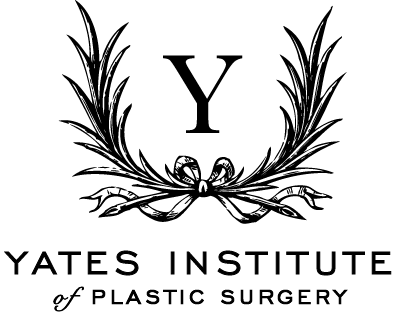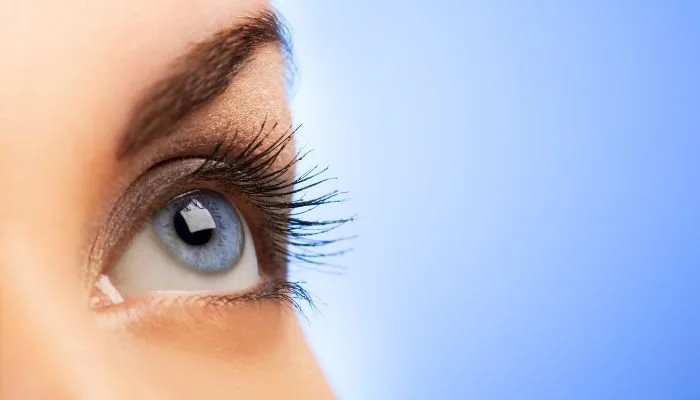Causes and Solutions for Hooded Eyes
How to Identify and Treat Hooded Eyes
Have you ever wondered why some eyes appear more deep-set or why your eyeliner seems to disappear when your eyes are open? This could be due to hooded eyes, a common yet often misunderstood feature. In this blog, we'll discuss the causes of hooded eyes and explore practical solutions for enhancing your eye shape.
What are Hooded Eyes?
Hooded eyes have an extra layer of skin that hangs over the eyelid crease, which makes the lid look smaller or sometimes almost hidden. This facial feature is quite common and varies significantly among individuals, often influenced by genetic and age-related factors. If you check yourself in the mirror and see that the top part of your eye seems hidden by a saggy bit of skin when you look straight ahead, you might have hooded eyes.
Do I Have Hooded Eyes?
Figuring out if you have hooded eyes is pretty simple. Here's a quick test you can do at home: look straight into a mirror in a bright room, and check out the area above your eyelid. If skin from your brow bone covers most of your upper eyelid when your eyes are open, you have hooded eyelids. Another sign is if you struggle to put makeup on your upper eyelid because there's not much space or it's hard to reach. To get a more accurate answer, you might want to talk to a specialist like a plastic surgeon.
Common Misconceptions about Hooded Eyelids
There are some misconceptions about hooded eyes, which can lead to confusion. Many think hooded eyes happen when you get older. It's true that your eyelids can droop more as you age because your skin loses its elasticity. But lots of people are born with this eye shape, which shows genes play a big role too.
Another myth claims hooded eyes can interfere with your sight. Most of the time hooded eyes are just about looks, not health. But in rare cases, if the hooding is bad, it might cut down your side vision. This could mean you need to see a surgeon with expertise in the field and look into treatment options.
Causes of Hooded Eyes
Genes vs. Getting Older
Knowing what causes hooded eyes is key to dealing with them well. Genes have the biggest impact. If your mom or dad (or both) have droopy eyelids, you're more likely to have them too or get them later. The exact traits you inherit can affect how much hooding you see and how noticeable it is from when you're young.
Growing old has a different impact on each person, but it brings changes to skin feel and stretch. As we get older, our skin loses collagen and becomes less tight, which maes the skin near our eyes sag. This natural change can make hooded eyes more noticeable as time passes. Too much sun and habits like smoking can speed up these changes, so it's important to start taking care of your skin and protecting it from an early age.
Environmental and Lifestyle Factors
Although genetics and aging are the main causes, environmental and lifestyle factors can also influence the severity and onset of hooded eyes. Too much sun without good protection can make skin age faster even around the eyes. Smoking also speeds up the breakdown of collagen in the skin, which leads to hooded eyelids showing up sooner.
To deal with these issues, you can make some changes in your life. Wear sunglasses and sunscreen, stop smoking, and eat foods with lots of antioxidants. These steps can help slow down the progression of hooded eyes. Taking care of your skin every day by keeping it moist and being gentle around your eyes can also help maintain skin elasticity for longer.
How Hooded Eyes Affect You
Vision Problems
Hooded eyes aren't just about aesthetics - they can affect your eyesight too. In severe cases, the skin that droops can block your side vision making it harder to do things like drive or read. Doctors call this condition dermatochalasis, and it's more than just annoying - it can be dangerous. If hooded eyes are messing with your vision, you might be able to get surgery that your insurance will pay for. This shows that sometimes, fixing hooded eyes isn't just about looking better - it's about your health too.
Aesthetic Concerns
From a cosmetic perspective, hooded eyes may cause an individual to feel self-conscious about their appearance. Many people feel that hooded eyes make them look older or more tired than they actually are. This perception can affect personal and professional interactions. The beauty industry has responded with numerous makeup tricks and techniques, as well as products designed specifically to help minimize the appearance of hooded eyes.
Solutions for Hooded Eyes
Hooded eyes have many effects, so dealing with them means looking at different aspects. If you want to change or reduce how hooded your eyes appear, it's important to have realistic expectations and to choose treatments that align with your overall health and happiness goals.
Solutions for hooded eyelids range from easy home fixes and makeup tricks that hide hooded eyes to long-lasting options like eyelid surgery.
Non-Surgical Solutions for Droopy Eyelids
Many people with hooded eyes can start with non-surgical options. These fixes can be easy, cheap, but just a temporary solution.
Makeup Tricks
Makeup has a strong effect on how hooded eyes look. Certain methods can make eyes seem more open and lifted. Applying light eye shadow on the lid and darker shadow tones to shape the crease can change the eye's form. Using eyeliner or false eyelashes can also have a positive impact in some cases.
Lifestyle Adjustments
Simple changes in daily life can help manage hooded eyes:
· Skin Care: Using moisturizers and firming creams can boost skin elasticity. Products with retinol, peptides, and antioxidants work especially well.
· Sun Protection: Wearing sunglasses and putting on sunscreen around the eyes can stop more skin damage.
· Healthy Habits: Getting enough sleep, drinking water, and eating foods rich in nutrients keeps skin healthy.
Surgical Solutions for Hooded Eyes
When non-surgical treatments are insufficient for correcting hooded eyes, or when the hooding affects vision or how someone feels about their looks, eyelid lift surgery might help. This procedure takes out extra skin and fatty tissue and tightens the skin that's left. This helps make the eyelids look more open and young.
Overview of Eyelid Surgery (Blepharoplasty)
Blepharoplasty is the surgical procedure used to correct this condition. The procedure involves making precise incisions along the natural crease of the eyelid, under the eyebrow, to minimize visible scarring. Through these incisions, excess skin, muscle, and possibly fat are removed or repositioned. The goal is to reduce the hooding while ensuring that the eye's natural contour is preserved or enhanced.
The operation lasts one to three hours. It can be done with the patient under local or general anesthesia, based on how complex it is and what the patient wants. The recovery time varies. Patients often have some swelling and bruising for up to two weeks. Most can go back to their usual activities within 10 to 14 days. But it might take several months for full recovery and to see the final results.
Benefits and Risks of Blepharoplasty for Hooded Eyes
Eyelid surgery helps with more than just aesthetics:
Better Eyesight: For those with severe hooding, removing excess skin can broaden the field of vision.
Younger Look: Many patients say they look more awake and fresh after the operation.
Long-lasting results: Unlike non-surgical options, the results of eyelid surgery can last for many years.
But like all surgery, blepharoplasty is associated with certain risks and potential complications. These might include infections, allergic reactions to anesthesia, and eyes that don't heal the same way. Choosing an experienced, board-certified plastic surgeon minimizes these risks significantly.
FAQs about What Causes Hooded Eyes and How to Fix Them
How long does it take to get better after eyelid surgery to fix hooded eyes?
· Healing periods differ, but most patients can go back to their regular daily routine 7 to 10 days after surgery. Still, it's important to stay away from intense activities and stick to post-op care guidelines to heal well. Swelling and bruising will subside in a couple of weeks, but you might not see the full effects of the surgery for several months. If blepharoplasty is associated with additional procedures such as a brow lift or a facelift, the recovery period can be longer.
Can I do any specific exercises or treatments at home to make my hooded eyelids look better?
· No exercises can fix hooded eyelids that genetics or aging cause, but some facial exercises might strengthen the muscles around the eyes. Also, using eye creams with ingredients like retinol or peptides can improve skin texture and firmness, which might make mild hooding less noticeable.
What should I look for when choosing a qualified plastic surgeon for eyelid surgery?
· When you're looking for a surgeon for eyelid surgery, make sure they have board certification in plastic surgery. Find a surgeon with decades of experience performing blepharoplasty procedures, and check out before-and-after pictures of their patients with similar issues. It's important to have a consultation with a qualified plastic surgeon where you can talk about what you want to achieve with the procedure, learn about the surgical approach, and see how comfortable you feel with the plastic surgeon.
Can eyelid surgery to fix hooded eyes also make my side vision better?
· Yes, if the hooded eyelids are severe enough to impair your peripheral vision, eyelid surgery can remove the excess skin and open up your field of vision significantly. Many patients find both functional and aesthetic improvements after the procedure. This functional benefit can also be a factor in insurance coverage decisions for the surgery.
Is eyelid surgery the only permanent solution for correcting hooded eyes?
· While eyelid surgery is considered the most effective and long-lasting solution for significantly hooded eyes, the outcome can vary based on factors like skin type, age, and overall health. Keep in mind that while the surgery eliminates excess skin, natural aging and environmental factors can affect the longevity of the results.
Final Words
Whether you opt for non-surgical methods to alleviate the appearance or choose a more permanent solution through eyelid surgery, it's important to make smart choices based on accurate info and expert tips. If you're thinking about surgery, get in touch and schedule a consultation to see how we can help you look fresher and have a more youthful appearance.
Further Reading about Eyelid Surgery at Yates Institute of Plastic Surgery
Read more about Risks associated with eyelid surgery and how to prevent them
Read more about Who are suitable candidates for eyelid surgery?
Read more about What to expect after eyelid surgery
Read more about Which is Best - Eyelid Surgery or Facelift?
Read more about 5 Benefits Of Eyelid Surgery And Why You Should Do It


